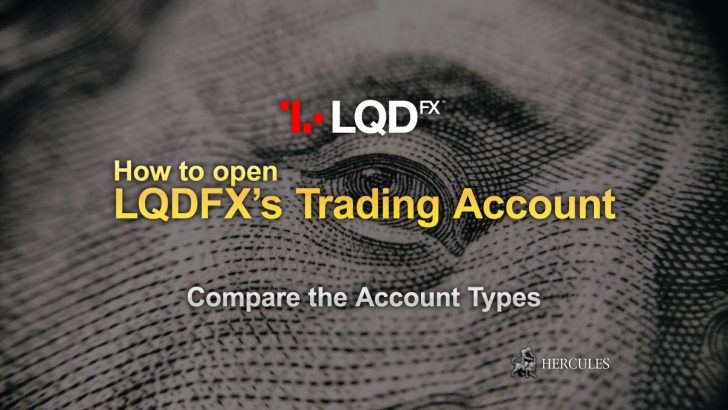Categories
Everything about Forex (FX) trading - How and Why for beginners
Here are some Tips & Knowledge that you should know. For Beginners!
- Take your time and Read through, before start trading Forex
- See Forex system and service details before trading
- Check the rules set by the FX brokers
- Forex trading is much better than Stock trading
- Forex market is actually very old as ancient
- Forex Market Price changes every second
- Profit requires good strategy in Forex
- Forex trading might keep you all night
- Technical and Fundamental Analysis are the keys to success
- Know the rules of Technical and Fundamental Analysis
- There is always Market Trend
- Don’t forget the long-term trend
- If you don’t plan then yo will lose
- 7 tips for successful Forex trading
Take your time and Read through, before start trading Forex
To be able to begin trading, the only thing a trader needs is a Forex broker who will take care of processing transactions for fees and a specific trading system.
There are numerous Forex systems available today and subscribing to them will provide traders with trading information and training to successfully profit against the big firms.
However, no system is perfect and a trader’s best bet is to ensure that he or she has more trade gains than losses.
This article will try to get into every aspect of Forex investment and what you should know as a beginner.
See Forex system and service details before trading
A Forex system is a specific set of rules formulated by a person or group of persons to teach aspiring people on the right way to trade in the Forex market.
With the many Forex trading systems in place nowadays, it’s hard to choose which one is the best for you.
These systems normally share some common features which include real time Forex currency graphs or charts, automated, alert indicators, universal currency converters, Forex training and risk probability calculators.
Some trading systems offer money back guarantees.
This is a good feature as it allows customers a certain amount of time to try the trading system and understand its basics to see if it is appropriate for your trading style and needs.
This will also allow traders to paper trade for a start.
Another feature a trader should look for is a good customer service department.
The Forex trading service provider should have a professional technical staff that can help traders anytime, any day when they encounter problems with the system.
Check the rules set by the FX brokers
There are specific rules that Forex trading systems teach to aspiring traders and investors.
They teach what currency pairs are traded by a certain system and the time to take part in a trade.
As for the timing, a system provides rules on what times of the day are traded and rules for entering according to the price action and indicators.
The process of determining the exit of a trade is also taught. These include the initial stops, trailing stops, breakeven stops and target profit stops.
Additionally, traders will be taught the way to apply risk management rules to the system and how events such as announcements impact trading whether you trade or whether you’re exiting a trade during those times.
Some other factors traders should consider when choosing a system include the historical profits either in pips or dollar amount, win-loss ratio, profit-loss ratio and consistency.
Forex trading is much better than Stock trading
The Forex trading system is a complex one compared to the stock market.
Remember that currency trading is the largest, most dynamic market and systems will always be in place as long as this market exists.
It is, therefore, a must that traders enhance their knowledge and skills every now and then to compete with the large institutes.
Practice is the key to succeed in this market.
Overall, reliability should be the top feature that a trader should look for in a trading system.
Keep in mind that the currency trading is fast-paced and any trader would not want to lose money with technical problems.
Forex market is actually very old as ancient
Changing currencies dates back to ancient times and has developed into an incredibly efficient online forex trading market.
Understanding the key developments in forex market history can help you become a better trader.
The reasons for foreign exchange are much the same today as they were hundreds of years ago.
Enterprises want to sell their goods in foreign lands but get paid in local currency.
Japanese workers building televisions for sale in the United Kingdom don’t want to get paid in pound sterling.
In the distant past, merchants bartered and worked out formulas for changing coins but it was impossible determine the value of foreign currencies. For a time, the answer was gold.
It was relatively easy to transport and held its value.
But trading in bullion coins proved problematic because of varying purities and unreliable scales.
Instead, governments began stockpiling gold and issuing currencies that were worth an exact amount.
At the same time to gold-standard failed, telecommunications evolved and international trade began growing exponentially.
Banks were building networks to allow them to more efficiently process international transactions.
This evolved into the interbank foreign exchange market.
Forex Market Price changes every second
This system kept exchange rates relatively stable worked until the 1970s when governments began to print more money than they could support with gold reserves.
A new system of floating exchange rates was born and continues to be used today.
It’s a market-based system that causes currencies to rise when they are in high demand and fall when they’re unwanted.
The networks continued to grow the system grew incredibly efficient and banks were soon able to trade currencies at remarkable tight spreads.
Some banks began using the system to speculate, but the market remained closed to investors, who throughout forex market history, have attempted to profit from changing currency rates but found the effort was costly and rarely profitable.
The creation of the internet and online forex trading leveled the playing field.
Retail investors can now access rates that are virtually equal to the intrabank market.
Today, there continue to be questions about the system of floating currency rates.
Countries are often accused of manipulating the market and academics fret because the U.S. dollar is the world’s dominant reserve currency.
Understanding forex market history can help you forecast how the market will change.
The arrival of the euro, the emergence of China and the global financial crisis are seminal moments and have prompted questions about the wisdom of a single, dominant reserve currency.
George Soros made billions after he broke the Bank of England’s effort to support the pound sterling.
Forex market history often repeats itself and understanding the important events will help you become a better trader.
Profit requires good strategy in Forex
All content supplied by The Askobid Academy is informational material and should not be considered as investment advice.
There is no right or wrong forex trading strategy.
Every market move is a potential money maker and every trader has a unique method of capturing that profit.
Some like to exploit intraday volatility, some like to seize momentum and some like wait patiently and strike.
The critical thing is to find out what works for you.
To determine your forex trading strategy, you need to find out what level of risk is comfortable for you and how long you can tolerate being in a risky situation.
There’s a fine line between stressful and stimulating.
Good trading requires good decision making and to make the right decisions you need to be in your comfort zone.
Forex trading might keep you all night
Some traders can’t sleep if they’re in a trade, others enter a trade then shut down their computer.
Some traders like to anticipate every move and if the market doesn’t immediately go their way, they get out.
Others feel like they’re at the mercy of short-term volatility but have success at forecasting trends.
There is no substitute for trading experience but by learning more about forex trading strategy you can be prepared.
The first step in finding a forex trading strategy that will work for you is determining how long you can be comfortable in a trade.
If you want to be in and out of the market for less than one day, learn about day trading strategies.
If you like to exploit ranges and can hold a trade for hours, look at swing trading.
If latching on to an underlying trend and standing pat is your strength, research position trading.
The annals of great traders show that every personality type can be a successful trader because there is a forex trading strategy for everyone.
Good trading is about confidence and using a style that works for you.
Technical and Fundamental Analysis are the keys to success
The vast majority of investment decisions are made through two methods: technical analysis and fundamental analysis.
Technical analysis refers to using charts and price patterns to forecast financial markets while fundamental analysis refers to scrutinizing underlying information in order to assess if an asset is properly valued.
Some traders strictly rely on technical analysis, while others say chart patterns are random and they trade based on economic fundamentals.
Even if you’re skeptical of technical analysis, it’s important to learn the basics because technical analysis is so popular that its believers are capable of influencing the markets, creating a self-fulfilling prophecy.
Technical forex trading is very popular and some studies even suggest the majority of currency speculation is done using technical analysis.
Know the rules of Technical and Fundamental Analysis
The world of technical analysis is vast.
The simplest forms of technical analysis involve drawing lines on charts but other systems use filters, overlays and mathematical formulas.
In some asset classes, volume is considered alongside price.
In technical forex, however, volume data is unavailable because currencies are not traded through an exchange.
Technical analysis has been used for a generations.
In the past, technical analysts faithfully noted price quotes from newspapers and drafted charts.
In recent years, technology has inspired innovative charting methods that are easily accessible.
Some technical analysis is easy to understand.
Envision a chart that is rising from the lower left toward the upper right.
The price is increasing in a choppy, yet consistent manner.
Now draw a straight, diagonal line touching all the lows.
The price now appears to be bouncing off your line.
This is a simple rising trendline and most schools of technical analysis believe that if this line breaks, it’s a signal that the rising trend is endangered.
They say that if you own this asset, you might want to sell.
If you’re on the sidelines, you may want to get short.
Many of the best traders use a blend of technicals and fundamentals.
A primarily fundamental trader may use technical analysis to determine good entry and exit points.
A technical trader may watch economic data to see if it prompts a trendline to be broken.
There are a myriad of ways to illustrate price action but some have proven more useful than others.
There is always Market Trend
his trading axiom is often quoted because it’s so true.
Time and time again, going with the market trend has proven to be the winning formula in online forex trading.
Sometimes, the market trend is blatant. Other times, it’s obscure.
At all times, a trader must know the trend – not only the short-term trend, but the trends for all time periods.
And remember that trends aren’t always higher or lower, they’re often sideways.
In a textbook, a rising trend is one that travels on a chart from the lower left to the upper right.
Unfortunately, markets don’t often look like textbook descriptions.
It’s also important for a trader to identify a forex trend while it’s in its infancy.
The key characteristics of a trend are the highs and lows.
An upward trend should have higher highs and higher lows.
A downward trend should be making new lows.
In a sideways trend, the market should be ranging between pre-established highs and lows.
Some traders refer only to the short, medium and long-term trends.
This type of classification can be confusing and should be avoided because for one analyst, a short-term trend is one that lasts a few weeks; for another, a it could be mere moments.
The forex trend that matters most for a trader is the shortest term – minutes and hours.
Identifying a market trend requires analysing several charts.
It’s rare a trend aligns over many time periods.
Always put on a trade with the short-term momentum but be prepared to take it off when it approaches an important longer-term level.
Don’t forget the long-term trend
A trader can get into trouble when he or she forgets about the long-term trend.
Daily, hourly and 15 minute charts may be showing a powerful forex trend but the monthly or yearly chart may be approaching a critical level.
As a rule, trade the short-term trend while respecting the longer-running trend.
There is a strong temptation to fight the trend.
It’s possible to make quick, large profits when a market reverses but remember that timing a reversal is extremely difficult.
As economist John Maynard Keynes said, “The market can remain irrational, longer than you can remain solvent.”
This is why the best traders sacrifice some of the early profits of a reversal in favour of waiting for a clearer picture.
If you don’t plan then yo will lose
Trade without a plan and you will lose money. It’s that simple.
In the long annals of trading, you might find a story about a man who could watch a market, buy or sell when it felt right and make fortunes.
But for every one who succeeds without a plan, there are a million fools who tried to do the same and lost.
Some smartened up fast and the rest continued losing money.
If you can’t follow a trading plan and want to make money in financial markets, you should take all your money and buy AAA-rated government bonds and be happy to earn 4% a year.
If you trade without a plan, the returns on those bonds will far exceed your profits.
Trading forex isn’t difficult.
Minus the tiny spread, you have exactly the same probability of success and failure.
What makes trading difficult is emotion.
If you’re not prepared, fear and greed will cloud your judgement and force you into foolish decisions.
The best time to make a decision is when you have nothing at stake.
7 tips for successful Forex trading
This is why all the important choices need to be made before there is money on the line.
With a proper trading plan you will have a map to follow when there is a fork in the road.
There is only one rule to trading with a plan: follow it.
Everything else that follows is merely a suggestion.
1. Plan well and put it in writing
Write the Plan Down or Draw it on a Chart.
You won’t remember your parameters and having them available is a great reminder and a way to improve your discipline.
Some may find that typing the plan in a word processor is enough, others feel a mystical power in writing the plan on paper.
2. Decide the trading size
Consider the Position Size: Will this be a one lot trade?
Will you establish a small trade and add to it at certain points?
Or will you establish a large trade and take profits at certain points?
There are many trading strategies relating to position size, choose one.
3. Set a Time frame of your trading
Before you trade, you should know what type of trader you are.
If you’re a day trader, determine if you plan to meet your target in minutes or hours.
If the trade doesn’t unfold as envisioned and enough time passes it’s probably a good idea to clear out of the trade and re-evaluate.
4. List the warning signs (raise the red flag)
Make a List of Red Flags, once you have decided on the nuts and bolts of your trade that doesn’t mean it is set in stone.
Oftentimes there are good reasons to close out a trade before the stop or target have been reached.
This sort of list could include things like, “watch for reversal patterns on the five minute chart” or “get out if the Bollinger Band is broken.”
5. Set the maximum limit for the loss
Have a Rule About Losses. All traders have bad days.
The trick is to not letting them become very bad days so set a limit on your daily losses.
6. Know your bad habits
Note Your Bad Habits. The only way you will conquer your bad habits is by recognizing them.
A lot of the best traders have notes stuck on their workstations to remind themselves not to give in to temptation.
7. Determine Entry and Exit Points
This sounds straightforward but there can be some leeway as long as you decide on it before you put on the trade.
Most traders, however, find that strict targets help keep themselves disciplined.
Trading with a plan doesn’t guarantee success but keeping good records and sticking to a strategy will help you to analyse your forex trading results and learn from them.










